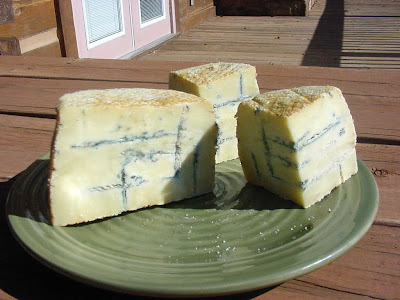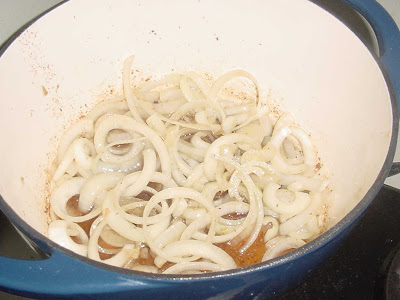Thanks to a friend, a very
small group gathered at a mountain rental cabin near the Blue Ridge
Parkway for the weekend before Thanksgiving and an early Thanksgiving Dinner.
Almost everyone there (except me and maybe one other person) will get to have
another Thanksgiving Dinner on the "proper" day with Family, but
since I basically live alone, I appreciated being able to share in the
traditional "turkey day meal" with friends, and Giving Thanks for all
we have.
It was a great time away
from home and everyone brought great food... in fact, an abundance of foods! I
may post about all the foods if others send me photos they took, but for now,
here's our Saturday adventure...
We loaded ourselves into a
couple of cars and went over to the Blue Ridge Parkway on Saturday to both a
winery and a cidery I've wanted to visit for 2-3 years. The Château Morrisette
wine tasting was really quite lovely, and very entertaining thanks to our
bartender. Other than the omission of any palate cleansers for 12 different
wines (including 2 ice wines), it was both professional and great fun.
One wine I would normally
have never tried actually surprised me by being quite tasty; it was made from
Scuppernongs, aka Fox Grapes. I generally shun sweetish wines but this was
nicely complex rather than sickeningly sweet. (The winery gave us the glasses
with their name etched on them that we used for tasting and several of our
group bought multiple bottles of wines to take home, so their excellent
presentation and marketing paid off!)
The Foggy Ridge Cidery (hard
ciders) tasting was disappointing. Being just 3 miles down the Parkway from
Château Morrisette, they probably need to do a better job of marketing at the
cidery site itself if they continue to be on the "tour". You never
know just who may drop in for a taste!
It was the same cost to
taste 5 hard ciders as 12 wines from Château Morrisette, but the cider samples
were barely a teaspoonful and the bartender was not fully educated on the
products (at least not on the fortified ciders, nor did she present how any of
the ciders could be served or used in recipes)... also she was not very
personable. I will excuse her as she may have been having a bad day from many
tastings earlier, but if that's the case they should have a back-up plan.
I did like the Pippin Black,
a brandy-fortified cider made with Arkansas Black apples and Newtown Pippins.
The Thos. Jefferson /
American style cider was tart but not dry, but I liked the English-style cider
better as it was dry and not too tart. I wouldn't even taste the sweet cider
one. The fresh raw cider I bought and fermented last fall was too sweet for my
taste after it fermented, even with no sugar added. To be fair, that fresh
cider I bought was made from eating apples whereas good hard cider is a mix,
but other than sweet, it was good. I just don't like sweet drinks as a rule.
(We didn't get a cidery glass etched with their name to keep, either.)
Once back at the cabin, we
had our own private cheese tasting with wines everyone had brought along for
the weekend. All three of my homemade cheeses (gorgonzola, farmhouse cheddar
and a young Caerphilly) were well-received, plus we had about 8-10 imported
cheeses our friends had ordered online.
I have to brag a tiny bit
and say I finally made an edible blue cheese... the gorgonzola dolce shown
above, which the blue cheese lovers deemed a success. (Remember I had to toss
out my first 3 attempts at making a blue cheese?)
The imported cheese
varieties (which I had helped choose from a short list of cheese specials) were
tasty and interesting but not great, excepting the very stinky and well past it's prime Tomme
Crayeuse we had to re-wrap quickly... but the selections didn't contain any
cheese that I think any of us would particularly order again except possibly
the 2 year old Avonlea Extra Sharp raw milk Cheddar from Canada (very
dry/crumbly almost like Parmesan because of the age, but would be lovely grated
on certain dishes).
I guess it's my fault for not knowing the vendor who is
not a cheesemonger... nor did I know anything of the creameries/artisans for
each cheese. I take full responsibility since several were cheese types I
wanted to try in case I wanted to try to make one.
One of the imported cheeses
was a Welsh Caerphilly [cheddar], and VERY different from the ones I've made so
far. It was a lot softer, creamier and not as traditionally salty; it was
rather more like an American mild cheddar. But at leasdt now I know I need to
work on "creamier" in general when I make more cheese.
As a surprise gift for me
personally, our organizer had ordered a wedge of Rogue River Blue straight from
the Creamery because I had said rather emphatically I wanted to try it
sometime. (Is that a great friend or what??) I put it out to share along with
the other cheese, and everyone who liked blues raved over it. If you like blues
at all, you really need to try this cheese sometime when you have a special
occasion; IT IS OUTSTANDING!!! No wonder it won Best in Show in combined
American, Canadian and Mexican competitions for 2 of the last 3 years.




























